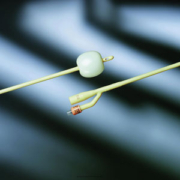Potential use of silver-alloy urinary catheters for reducing infection rates
Multiple strategies have been deployed to reduce catheter associated urinary tract infections. These include employing correct hand-washing procedures, avoiding breakages in the urinary collection system and taking measures to prevent commensal bacteria from the patient contaminating the catheter. As well as changes in clinical practice, we need to be mindful of the potential technological and equipment solutions. This article highlights the potential use of silver-alloy urinary catheters to reduce catheter associated urinary tract infections.
by Michelle Beattie
Catheter associated urinary tract infections are often accompanied by an increased period of hospitalisation and morbidity, resulting in poor outcomes for patients as well as their families, and significant economic costs to service providers. Despite the high risk of infection and other potential complications, urinary catheters have many beneficial uses in healthcare including diagnostic, prophylactic and therapeutic uses. Regardless of whether the urinary catheter is used for therapeutic or diagnostic purposes, catheters should only be inserted when deemed absolutely necessary, due to their association with significant morbidity and mortality [1].
Catheterisation and sources of infection
As urinary catheterisation involves the insertion of a catheter into the bladder via the urethra, the patient is at a higher risk of infection, as essentially the body treats the presence of a catheter as a foreign body. The body


